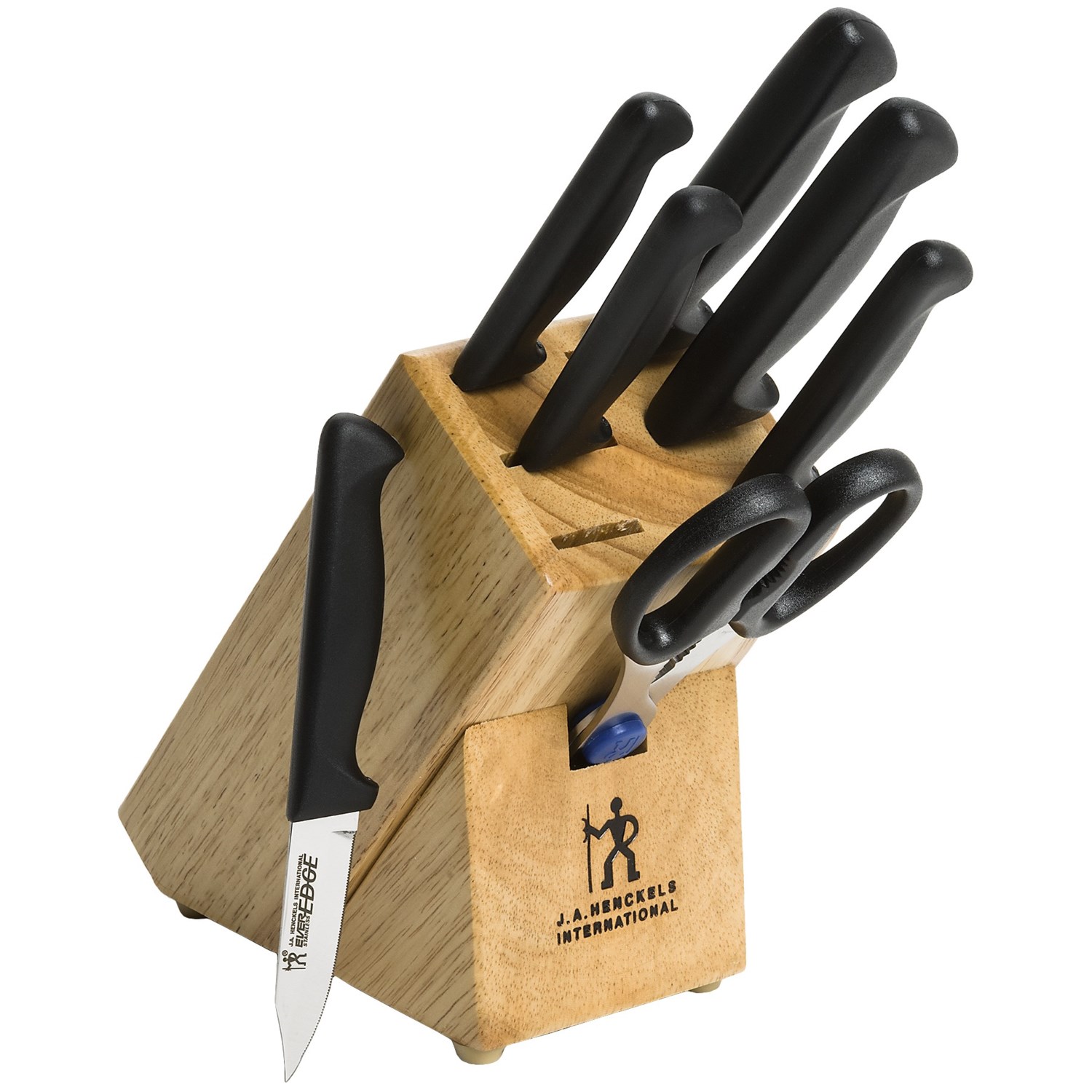The knife storage solution in my apartment is currently precarious, to put things lightly. All of our knives are currently in a drawer in random orientations with knives of various lengths. They also happen to be somewhat near other cutlery, like forks and spoons, which means that it is a small miracle all of my roommates and I haven’t seriously cut ourselves. I’m honestly too embarrassed to take an actual picture of our knife/cutlery drawer, but it looks like a messier version of this picture:

This problem led me to thinking about creating a knife block to store my knives. Not only would it solve a genuine problem I have, but it would also allow me to explore something that could have subtle design cues that I like while also being sustainable. The sustainable aspect of this knife block is the sourcing of the wood itself. I have a friend who works extensively with wood on various projects. As such, he has a significant amount of scrap wood that would otherwise be thrown away. Instead of discarding it, he and I discussed using the various scraps of wood to create a wood block. This would create a unique, one of one pattern for the knife block. Not only would this look different compared to other knife blocks, but it would also put a significant amount of wood to use that would otherwise be discarded.
The design of the knife block itself is something that I have given considerable thought to, even if some of the design changes that I want to make to it are subtle. There was an interview with Craig Federighi, Apple’s head of software design, where he mentions that human faces have an lot of curves, so it makes sense to have the software reflect that. This can also be seen in other Apple-designed areas, such as the staircase railing design in Apple Park:

Most staircases have sharp edges, but these have a radius of curvature and there are very few harsh edges. This desire to erase perpendicular edges and create a knife block that looks organic is something that I am going to attempt to pull off.
The most differing aspect of my knife block will be that it will be made out of a single sanded piece of wood sandwiched together. Most (if not all) knife blocks are actually made with two pieces of wood, as can be seen here:

My design would get rid of this line, and instead feature one continuous line, from the top of the knife block to the waterfall edge to the base. The block would also not have the sharp angles that can be seen at the rear of this knife block, instead continuing the line from the rear until it meets the table that it rests on. The cut-outs for each of the knives, as well, would be rectangles with rounded corners instead of rectangles with perpendicular vertices. Again, while all of these design changes are subtle, I believe that (at least to me), this would increase the beauty of something as a knife block that most people don’t give a second thought to.
Comment Responses
Hey Trent! Your first intuition was correct. If you look really carefully at the way knife blocks are constructed, they all take a band saw or a table saw to the sides and then glue the sides on for the internal structure. Using a drill press isn’t really feasible since it wouldn’t create the same kind of clean lines that you would both want aesthetically and need to ensure that your knives don’t get bent as you put them in the knife block.
[1] “Apple Responds to Your Comments!”, MKBHD, 2020, https://www.youtube.com/watch?v=Q2aaCDNjWEg


1 Comment. Leave new
Hi Josh! I really enjoyed reading this post, it sounds like your upcycling project is going to be both practical and aesthetically pleasing. The use of minimalistic elements in conjunction with recycled scrap wood sounds like a perfect combination. My question comes as a manufacturing query, do you know how are you going to cut the slots for the knives into the wood? Such as potentially slicing out the knife slots with a bandsaw from the original blocks of wood before gluing them together, or are you going to go along the lines of using a drill press to carve out the internal structure?